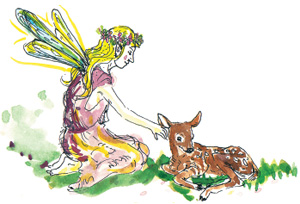In many communities, people are bringing back the traditions of the Celtic past, especially where the customs were the last to leave. You might want to investigate May Day fairs, parades, pageants (such as the Spring Revels), maypole dancing, and morris dancing in or near your local community. In Minehead, Padstow, and Helston, England, May Day festivals and pageants are still held in the towns’ streets every year.
During the ancient festival, cattle would be driven between two fires to purify and protect them from disease before they were sent out to the pastures. In many villages of Celtic ancestry, this purification practice is still held.
In Ireland, the months before Beltane were when marriages were planned. There was much matchmaking among the adults of each clan or tribe, and weddings would be held at Beltane. Couples would leap over the sacred fire to ensure fertility in their marriage. Today, late spring marriages are still popular, especially in June.
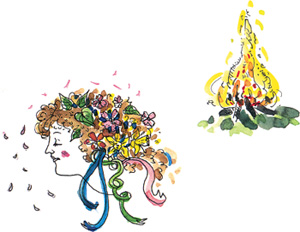
A fair maid, who, the first of May Goes to the fields at break of day And washed in dew ‘neath the hawthorn tree will ever after handsome be
—Traditional rhyme
In May Day celebrations, washing your face in the early morning dew is said to have magical consequences. The first man seen by a woman who had just washed her face in the dew would be her lover or future husband.
The crowning of the May Queen also derives from old Celtic traditions. She would represent the Flower Maiden or the young aspect of the Goddess. Christian tradition has absorbed this with the crowning with flowers of statues of the Virgin Mary on May Day. Today we also have festivals to crown the “Queen of the May” and Mother’s Day and May Day picnics as well.
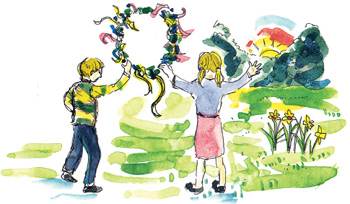
Children in some English villages still celebrate May Day with fairs and dancing outdoors.
• Locate sunrise and sunset times for your area. Compare with Samhain times.

• Find a small tree or shrub and decorate its newly leafing branches with colored ribbons or strips of cloth. This tradition is still found in Cornwall and Ireland as a request for healing and renewal by spring’s energy.
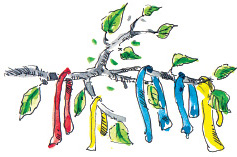
• Find a time during your day to go outdoors and sit in a quiet place. Be really quiet for 3–5 minutes. Then write: three sounds, three colors, three images of new spring. Make a short poem or a three-sentence description using those observations. Now pretend you are part of a tree, leaf, cloud, or flying bird. The Celts were known for their ability to “shape shift”—that is to take on the form of the animals around them.
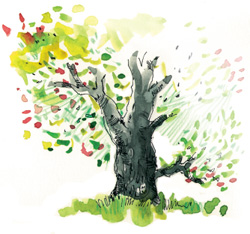
• To make a dandelion chain, slit each stem and insert the next.

• In many communities, people are bringing back traditions of the Celtic past. Investigate a local May Day Fair, maypole, sword, or morris dancing.
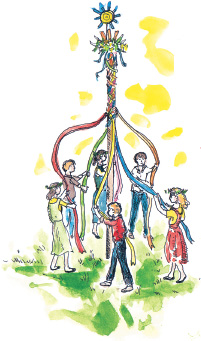
• Make some hard-boiled eggs, then save the water you boiled them in. Put it outside for the Faeries.
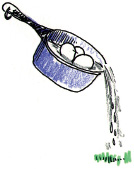
• Investigate stories about Faeries, such as Tam Lin or the story of Thomas The Rhymer.
